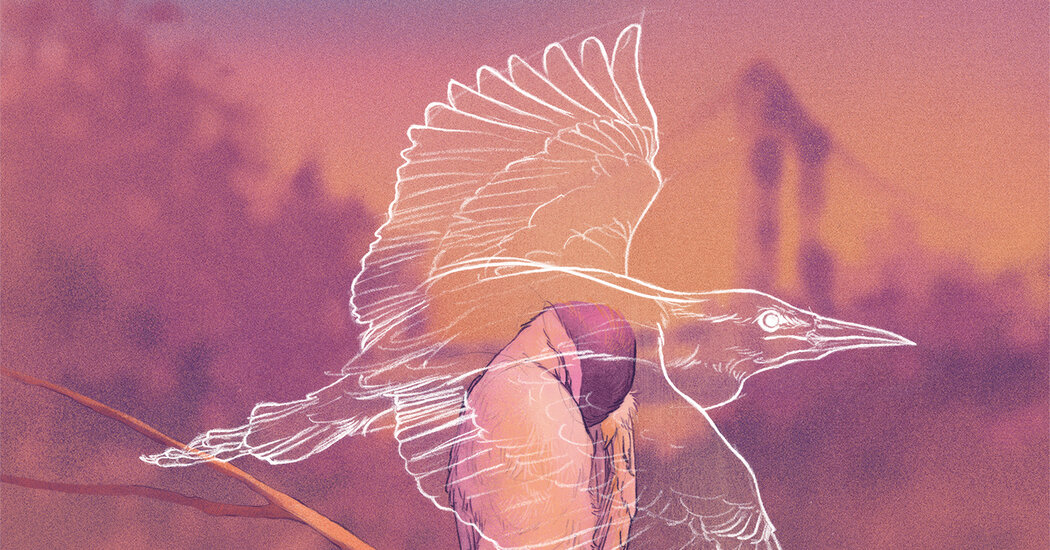What new research on the avian brain and REM sleep in birds might reveal about our own dream lives.
I once dreamed a kiss that hadn’t yet happened. I dreamed the angle at which our heads tilted, the fit of my fingers behind her ear, the exact pressure exerted on the lips by this transfer of trust and tenderness.
Freud, who catalyzed the study of dreams with his foundational 1899 treatise, would have discounted this as a mere chimera of the wishful unconscious. But what we have since discovered about the mind — particularly about the dream-rich sleep state of rapid-eye movement, or REM, unknown in Freud’s day — suggests another possibility for the adaptive function of these parallel lives in the night.
One cold morning not long after the kiss dream, I watched a young night heron sleep on a naked branch over the pond in Brooklyn Bridge Park, head folded into chest, and found myself wondering whether birds dream.
The recognition that nonhuman animals dream dates at least as far back as the days of Aristotle, who watched a sleeping dog bark and deemed it unambiguous evidence of mental life. But by the time Descartes catalyzed the Enlightenment in the 17th century, he had reduced other animals to mere automatons, tainting centuries of science with the assumption that anything unlike us is inherently inferior.
In the 19th century, when the German naturalist Ludwig Edinger performed the first anatomical studies of the bird brain and discovered the absence of a neocortex — the more evolutionarily nascent outer layer of the brain, responsible for complex cognition and creative problem-solving — he dismissed birds as little more than Cartesian puppets of reflex. This view was reinforced in the 20th century by the deviation, led by B.F. Skinner and his pigeons, into behaviorism — a school of thought that considered behavior a Rube Goldberg machine of stimulus and response governed by reflex, disregarding interior mental states and emotional response.
In 1861, just two years after Darwin’s publication of “On the Origin of Species,” a fossil was discovered in Germany with the tail and jaws of a reptile and the wings and wishbone of a bird, sparking the revelation that birds had evolved from dinosaurs. We have since learned that, although birds and humans haven’t shared a common ancestor in more than 300 million years, a bird’s brain is much more similar to ours than to a reptile’s. The neuron density of its forebrain — the region engaged with planning, sensory processing, and emotional responses, and on which REM sleep is largely dependent — is comparable to that of primates. At the cellular level, a songbird’s brain has a structure, the dorsal ventricular ridge, similar to the mammalian neocortex in function if not shape. (In pigeons and barn owls, the DVR is structured like the human neocortex, with both horizontal and vertical neural circuitry.)
